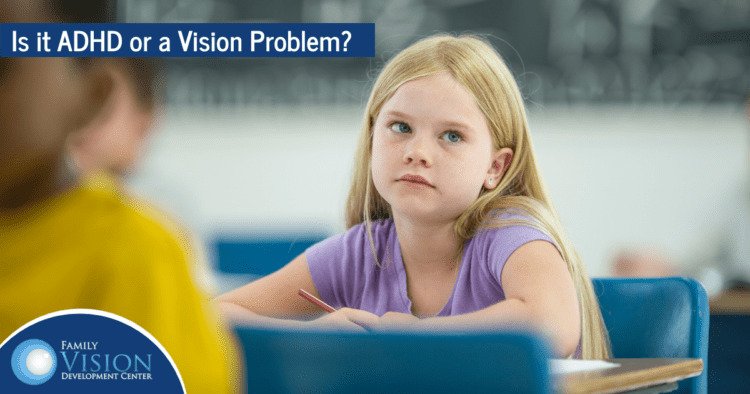

Is it Really ADHD? Surprisingly, it Could be a Vision Problem.
If your child has been diagnosed with ADHD, you may want to have their vision checked before committing to medication alone to improve their symptoms. In fact, children are frequently misdiagnosed by their doctor, simply because the symptoms of ADHD are so similar to those of some vison disorders. Parents should do their research and make sure they have all the facts and necessary testing completed before deciding on the appropriate treatment for their child.
Why Vision Problems get Misdiagnosed as ADHD
ADHD is a relatively common disorder for kids to suffer from, so when a child presents with the typical symptoms, their doctor may be quick to diagnose it as the cause. However, a number of vision disorders have many of the same symptoms as ADHD. This can result in a child being prescribed medication as a cure, when what they really need is vision correction. If a child has any of the following symptoms, it could be due to ADHD or a vision problem (or both), which is why a correct diagnosis can be tricky:
- Struggles to pay attention or concentrate in class
- Difficulty with reading or writing
- Tests poorly, even when they know the material
- Makes careless mistakes
- Starts assignments but has trouble completing them
- Poor performance in sports
- Has trouble organizing tasks
Due to the similarities in symptoms, if your child is suspected of having ADHD, it is wise to also get them tested for a vision disorder.
Vision Disorders That Can Mimic ADHD Symptoms
When a child has problems with their functional vision, certain visual skills become lacking, which results in symptoms like those of ADHD.
Functional vision is how your complete visual system, including your eyes, brain and the visual pathways between them, work together to make sense of the world around you, and help you understand and interact with your surroundings. It allows you to see objects with depth and dimension (like a ball, for example), and understand how to interact with it (catch it).
Problems with functional vision means the eyes and brain do not work together properly and can result in difficulty with focusing, depth perception, tracking skills, reading comprehension, hand-eye coordination and more. The symptoms of these vision issues, such as loss of concentration, not paying attention in class, rushing through work with careless mistakes, poor sports performance, etc., are often confused with those of ADHD. Therefore, getting your child evaluated for functional vision disorders can help you determine the best course of treatment.
Vision Therapy as Treatment
Vision therapy can be a very effective form of treatment for functional vision disorders. However, it can also be the right choice as an additional form of treatment for kids who have ADHD, as many of these children also have vision issues that require treatment.
Vision therapy is like physical therapy for the visual system. Through a series of therapeutic eye exercises and activities, a vision therapy program can retrain the eyes and brain to function together properly and restore proper visual skills. Our specially-trained vision therapy providers tailor our programs to each individual, based on the visual issues that have been diagnosed. The 30-40 minute sessions take place right in our office, with some at-home practice often recommended. Vision therapy is remarkably successful in treating functional vision problems and can often even eliminate the need for ADHD medications and the side effects that go with it.
Contact our office at 630-862-2020 to learn more about the similarities between ADHD and vision disorders, and to have the proper testing completed, so you can be confident in your treatment decisions.

